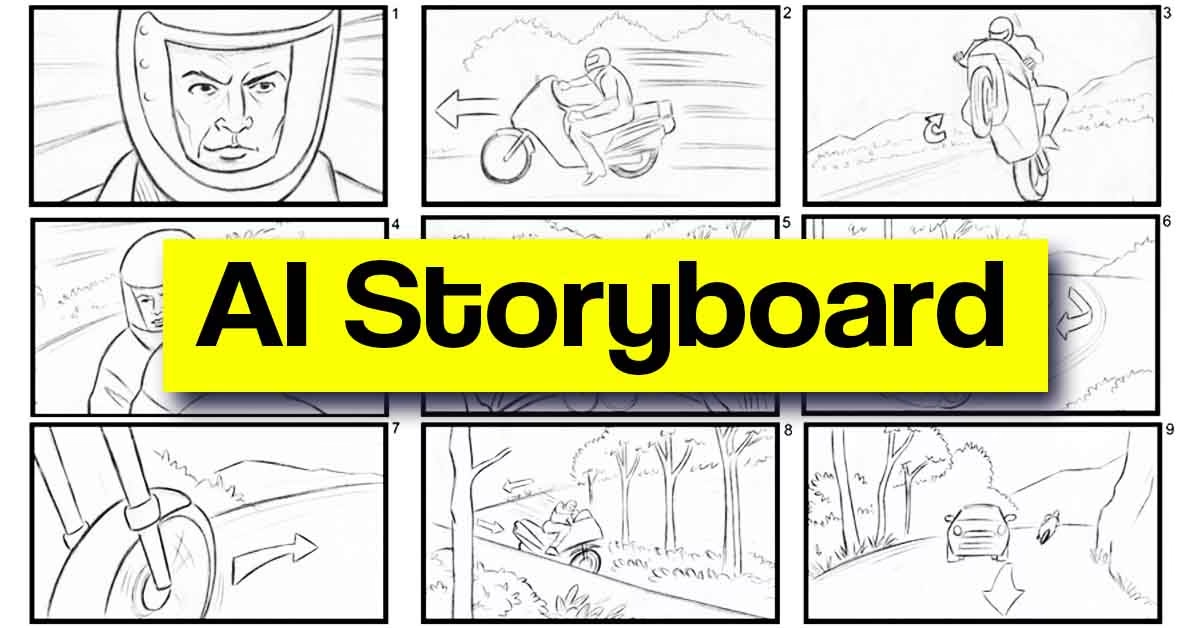Introduction: The Evolution of Storyboarding with AI
Storyboarding and video planning have long been labor-intensive processes, requiring hours of sketching, scripting, and collaboration. But in 2024, AI is rewriting the rules, enabling creators to generate dynamic storyboards, predict audience engagement, and automate pre-production tasks—all while cutting costs and timelines. Whether you’re a filmmaker, marketer, or content creator, this guide explores how AI is reshaping storytelling from concept to screen.
The Challenges of Traditional Storyboarding
- Time-Consuming: Manually sketching scenes and drafting shot lists can take days.
- Costly Revisions: Client feedback often requires restarting from scratch.
- Creative Limitations: Static boards struggle to convey motion or tone.
- Collaboration Hurdles: Coordinating input from writers, directors, and clients is chaotic.
Top AI Tools Revolutionizing Storyboarding & Video Planning
1. Runway ML
- Key Features:
- Text-to-Storyboard: Generate visual sequences from prompts like “cyberpunk chase scene, neon-lit alleyways.”
- AI Pre-Visualization: Convert rough sketches into animated previews.
- Use Case: Create a 30-scene storyboard in 10 minutes.
- Pricing: Free tier; Pro starts at $15/month.
2. Synthesia
- Key Features:
- AI Avatars: Film scenes with virtual actors using text scripts.
- Auto-Generated Shot Lists: Transform scripts into camera angles and transitions.
- Use Case: Plan a corporate training video without hiring actors or crews.
- Pricing: Starts at $22/month.
3. Pictory
- Key Features:
- Script-to-Video: Convert blog posts or scripts into storyboarded videos.
- Auto-Captioning & Scene Splitting: Speed up editing workflows.
- Use Case: Repurpose a podcast into a social media teaser in 1 hour.
- Pricing: Starts at $19/month.
4. Boords
- Key Features:
- AI-Powered Templates: Pre-built frames for ads, animations, or films.
- Collaboration Hub: Share boards with real-time feedback and annotations.
- Use Case: Streamline client approvals with interactive, editable boards.
- Pricing: Free for basic use; Team plans at $12/month.
5. DeepStory
- Key Features:
- Emotion Analysis: Predict audience reactions to scenes using AI.
- Dialogue Optimization: Refine scripts based on engagement data.
- Use Case: Test multiple storyboard endings to choose the most impactful.
- Pricing: Custom quotes (contact for demo).
How AI Transforms Video Planning
- Automated Scene Generation:
- Tools like Runway ML turn text prompts into visual sequences, reducing manual sketching.
- Real-Time Collaboration:
- Boords and Frame.io let teams annotate and edit storyboards globally.
- Predictive Analytics:
- DeepStory analyzes historical data to suggest high-impact shots or pacing.
- Cost Efficiency:
- Synthesia eliminates location and actor costs with AI avatars.
Step-by-Step: Using AI for Storyboarding
- Script Input: Upload your script to Pictory or type a prompt into Runway ML.
- AI Visualization: Let the tool generate scene visuals, camera angles, and transitions.
- Refine & Annotate: Adjust frames using AI suggestions (e.g., “add close-up shot here”).
- Client Sharing: Export to Boords for feedback or Synthesia for animated previews.
- Finalize: Export shot lists to your editing software (Premiere Pro, Final Cut).
Case Study: Indie Film Saves 60% Pre-Production Time
Challenge: A low-budget film needed to storyboard a 15-minute short in 3 days.
Solution:
- Used Runway ML to generate 50+ scenes from the script.
- Refined frames in Boords with team input.
- Tested emotional pacing with DeepStory.
Result: Completed the board in 1 day, securing investor funding early.
Challenges & Ethical Considerations
- Over-Automation: AI can’t replace human intuition for nuanced storytelling.
- Bias Risks: Tools trained on limited data may produce stereotypical visuals.
- Transparency: Always disclose AI use to clients for ethical compliance.
The Future of AI in Video Production
By 2025, expect:
- AI-Driven AR/VR Storyboards: Plan immersive experiences in 3D spaces.
- Real-Time Language Localization: Auto-generate scenes for global audiences.
- Generative AI Directors: Tools that suggest blocking, lighting, and pacing.
FAQs
Q: Can AI replace human storyboard artists?
A: No—it enhances efficiency, but artists add emotional depth and creativity.
Q: Are there free AI storyboarding tools?
A: Yes! Runway ML and Boords offer robust free tiers.
Q: How accurate are AI-generated storyboards?
A: They’re starting points. Always refine with human insight.
Conclusion
AI is not just a tool—it’s a collaborative partner in storytelling. By automating tedious tasks and unlocking new creative possibilities, tools like Runway ML and Synthesia empower creators to focus on what matters: crafting compelling narratives.
